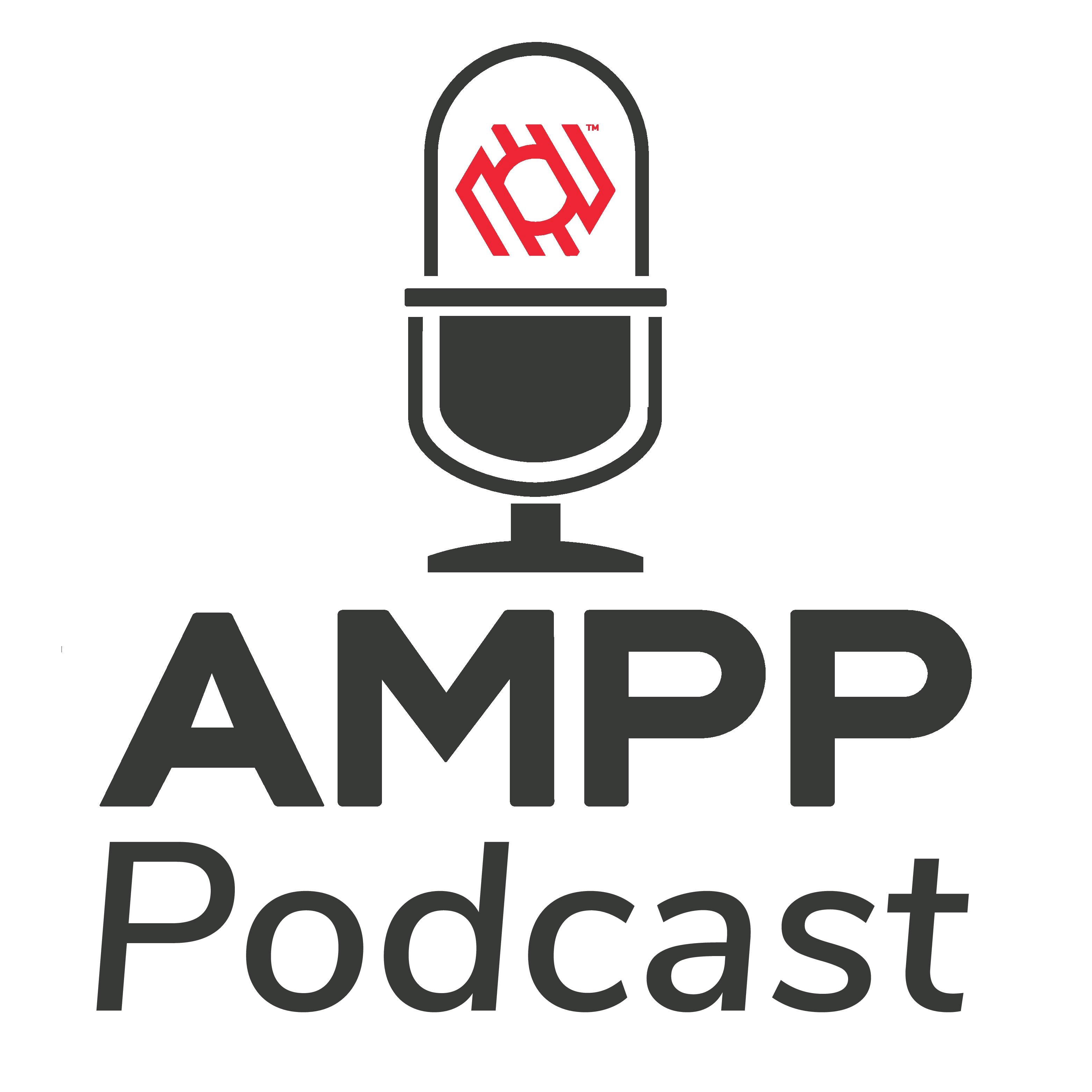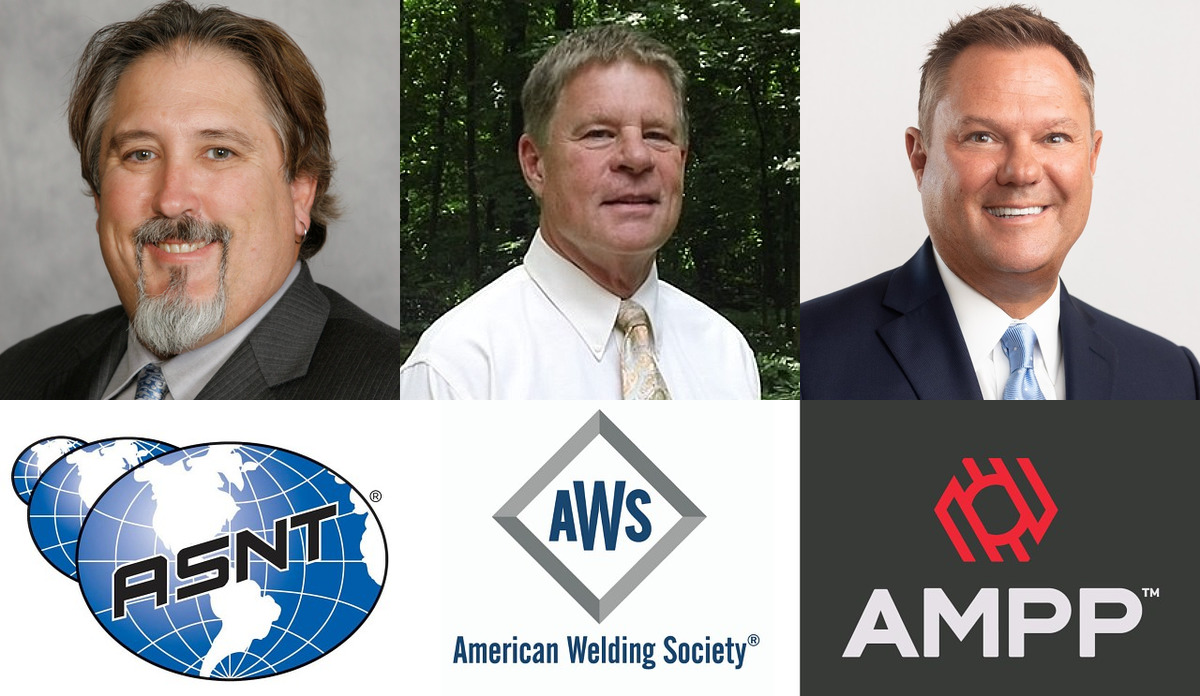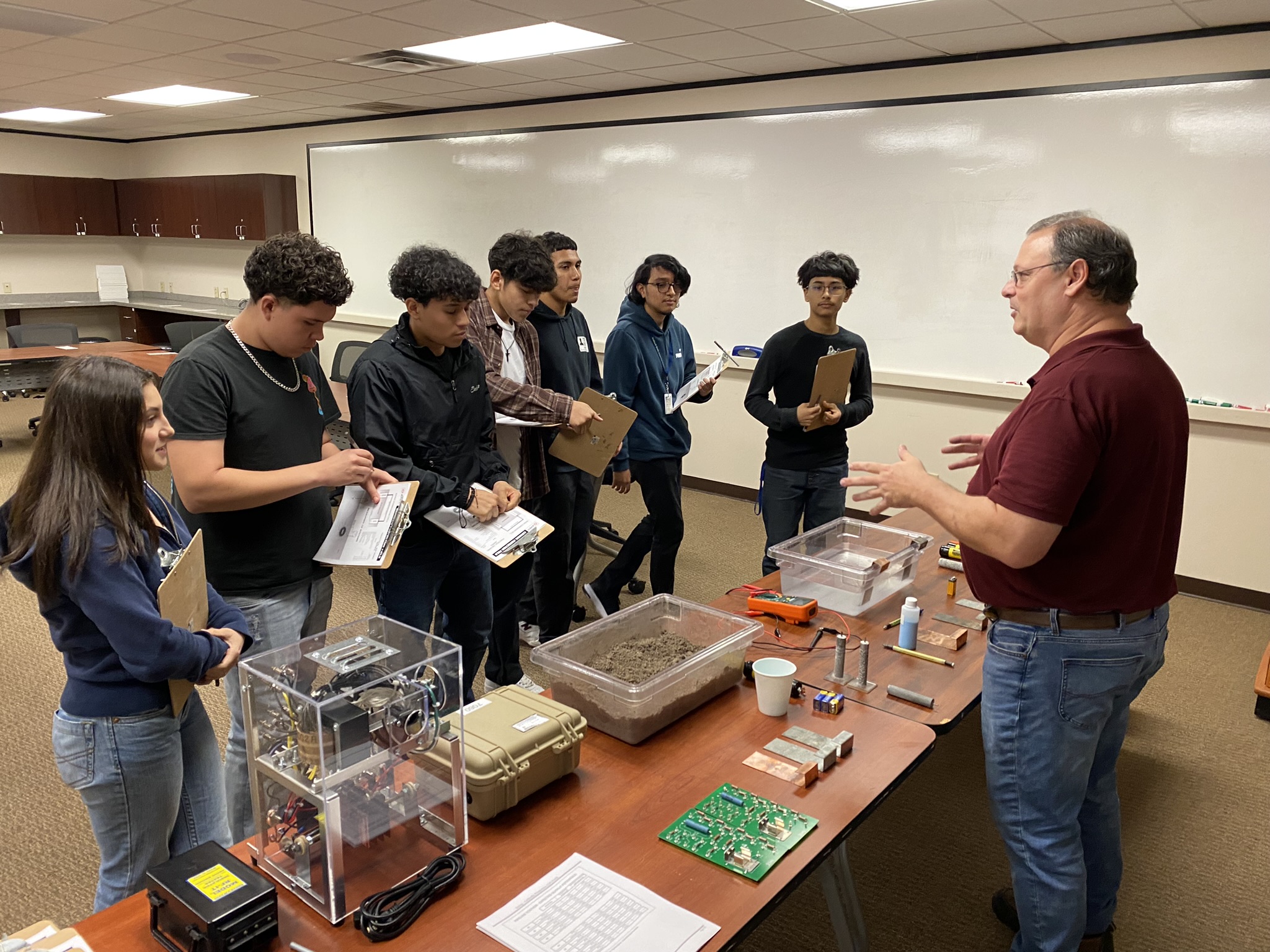A roundtable forum on our podcast network welcomed Alan Thomas, CEO of the Association for Materials Protection and Performance (AMPP); Dr. Rick Polanin, past president of the American Welding Society (AWS); and Ricky Morgan, past president of The American Society for Nondestructive Testing (ASNT).

Topics include the current state of workforce development as well as common challenges, innovative solutions, and initiatives where associations can work together. Other discussion points involve recent technological advancements; lessons learned from each person’s career journey; and the role of diversity and inclusion in building the workforce of the future.
Read on for a partial Q&A transcript of that episode, and listen to the full conversation at the embedded link beneath the article.
Q: What’s your perception on the current state of workforce development within your industry? What are some initiatives or strategies that you’ve found effective in helping to promote workforce growth?
Morgan: Outreach is primarily our biggest thing. We needed to do better outreach to reach the current generations who are coming into the workforce. I think we were used to how we did it for other people in our previous generations.
They’re looking to be involved right away. Some people aren’t used to paying dues, like we were used to growing up. So, getting them involved in the decision processes is very important. But what we’re also trying to do is lay out roadmaps for career success within the NDT [nondestructive testing] field.
Then, we’re also doing outreach to teachers and educators. We’re working on apprenticeship programs, which we have not been very active on, in the past. We’re a little behind the curve right now, but I think we’re catching our stride.

Polanin: We all know that currently, we’re having a hard time attracting workers in all sectors of the economy. That certainly includes manufacturing and welding.
One of the large problems is that through the years, there has been a perception of many of the manufacturing fields—and even skilled trades fields—as being very difficult work, somewhat dirty and somewhat dangerous. So, during my entire career, I've tried to combat that perception by addressing most of the issues that many young professionals who might be entering the workforce have … that are negative toward the industry.
It seems that we need to be able to get to those students, as Ricky said, earlier in their lives. We need to present the opportunities that are available in all of the skilled trades, industries, manufacturing, and construction.
To promote those areas, many of us involved in professional organizations have used that organization to present scholarships, grants, and other initiatives to students. The idea is that it can help them develop their educational and training strategies toward the future.
The American Welding Society [AWS] gave about $2.8 million worth of grants and scholarships last year. For my own students [as a professor], Pell Grants are a very valuable part of their educational payment system. So, a strategic alliance between government and professional organizations is needed to promote all of our industries in manufacturing and welding through the next many years.
Thomas: AMPP is working, right now, on a different perspective. We’ve been at work, like ASNT and AWS, in working across our base to develop scholarship programs. We have outreach programs, and we have dedicated programs toward putting veterans to work, all those types of things.
Unfortunately, I think if we were honest about the current state, we would say we really haven’t moved the needle very much. So, we’re taking a little bit of a different approach right now. We have some initiatives in front of our Boards of Directors that they’re weighing in on … to possibly take a different approach to workforce development.
It’s about looking at it more from an economics perspective, where you’re dealing with both a supply and demand issue. All three of our organizations, we see an extremely high demand for a skilled workforce, or even a workforce that’s willing to be upskilled. But the supply is just not there.
Rick mentioned some reasons why those perceptions exist, or what things may have been done to impact that. But I believe our organizations, and the ones I’ve looked at and researched, spent a lot of time on the supply side of that equation. They’re trying to attract and to motivate, and inspire, equip, and upskill. While those things are necessary, I think we’ve lost the demand side of that equation.
So, what we would like to start doing, through an ecosystem of partners like ASNT, AWS, and maybe AWWA [American Water Works Association] and some others, is this: How do we approach this from the demand side? We want to see if we can do something to take care of the supply and attract that. If we just apply the basic laws of economics and get that demand up, the supply is going to be there.
That’s kind of our approach and our state of the union, if you will. AMPP’s EMERG program is doing a lot. They’re raising awareness, all the way from elementary and grade schools and into vo-tech schools. We provide kits for laboratory experiments.

Last summer, I spoke a couple times to a group of teachers that are working in the industry, not just with us but also with welding and nondestructive testing. We offer travel benefits and scholarships to people to attend our conferences or training sessions. We discount training [costs] and things like that.
But really, I believe the issue … with our approach and our focus on demand, it’s much bigger than AMPP can ever tackle. It’s much bigger than what ASNT or AWS can tackle. Together, we can work to really move that needle.
Q: What are some of the more common challenges that you see individuals face when they’re entering the industry, and how can those be overcome? Are there any innovative solutions or approaches that might address some of those challenges?
Thomas: This may be an unpleasant answer for some of the listeners. But anyone who knows me knows I like to point out the good, the bad, and the ugly. There’s no point in dancing around issues when we know they’re there.
We did scientific research for our latest DEI [diversity, equity, and inclusion] study. When we were surveying the females in the sector, and those who wanted to come into the sector, we had 22% citing a lack of employer financial support in their career trajectory. Then, 19% said they had a lack of employer support for time to participate in training.
That’s almost 40% of the reason, when it comes to the challenges around some of these career tracks, coming from employers. That’s what I was saying earlier, as far as needing to focus on the demand side just as much as the supply side. Our employers have got to face some challenges themselves and say, “Are we creating an environment that allows someone to advance in this career track? Are we supporting people advancing in this career track, or are we putting the burden back on them?”
Our research has shown that in the female category, 40% of them do not feel they have employer support. That is an exponential challenge. We want to work with our asset owners and employers across AMPP in helping them create environments that do.
From an association standpoint, we've got to be able to deliver just-in-time training and relevant programming. We are operating like many other organizations. A lot of our hallmark programs are fairly dated. They’ve been around for a long time, and they’ve served the industry well. We have to be willing to look at those and say, “Are they still meeting the needs of an individual’s career path, to be able to advance? Are we an impediment? Are we putting too many of our requirements on something … when we know that’s a non-feasible requirement to put on someone?”
What we’ve found is that a lot of those self-inflicted requirements … whether it be certifications, hours in the field, hands-on experience, and things of that nature … those are proven to not make a better employee. In that, I’m referring to things that are not safety-critical roles. These are other [roles] that maybe have some flexibility. Just because you’ve got 100 or 200 hours, or 10,000 hours on the job, that doesn’t necessarily mean you’re great there. I think us reevaluating some of those things, and being willing to adapt and be flexible, is very important.
Then, we need to make sure our models are up-to-date, and that the models we put in place are in keeping up with things like carbon capture and hydrogen and dealing with drones and AI [artificial intelligence]. Are we really preparing a workforce around those? Do we have relevant content programs, services, and offerings to help someone’s career move along those lines?
We have to get to work—we being AMPP—because we’ve got a lot of catching up to do in some of those areas, for sure.
Comments from these panelists were made on a recent episode of the Materials Performance (MP) Interview Series. To hear the complete podcast, listen below.